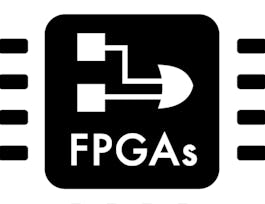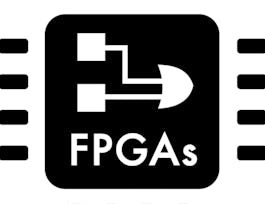New application domains demand ever increasing adaptability and performance. In order to cope with changing user requirements, improvements in system features, changing protocol and data-coding standards, and demands for support of a variety of different user applications, many emerging applications in communication, computing and consumer electronics demand that their functionality stays flexible after the system has been manufactured. Reconfigurable Systems-on-a-Chips (SoCs) employing different microprocessor cores and different types of reconfigurable fabrics are one attractive solution for these domains. The increasing prominence of reconfigurable devices within such systems requires HW/SW co-design for SoCs to address the trade-off between software execution and reconfigurable hardware acceleration. Dynamic reconfiguration capabilities of current reconfigurable devices create an additional dimension in the temporal domain. During the design space exploration phase, overheads associated with reconfiguration and hardware/software interfacing need to be evaluated carefully in order to harvest the full potential of dynamic reconfiguration.



FPGA computing systems: Partial Dynamic Reconfiguration

Instructor: Marco Domenico Santambrogio
Sponsored by Taipei Medical University [C4CB]
1,554 already enrolled
Recommended experience
What you'll learn
You will learn to name the 5 Ws with respect to a reconfigurable hardware context
You will learn which techniques can be used to deal with the overhead introduced by the Partial Dynamic Reconfiguration
You will compare different flows to realize a reconfigurable system and you will explain the phases composing a design flow for FPGA-based system.
You will understand the reason of moving towards reconfigurable cloud solutions and moving from a single FPGA-based system to a distributed scenario
Skills you'll gain
- Software Quality Assurance
- Electronic Hardware
- Computer Systems
- Software Engineering
- Computer Science
- Quality Assurance and Control
- Electrical and Computer Engineering
- Electrical Engineering
- Field-Programmable Gate Array (FPGA)
- Embedded Systems
- Software Development
- Maintainability
- Computer Engineering
- Software Architecture
- Electronic Systems
- Hardware Design
Details to know

Add to your LinkedIn profile
8 assignments
See how employees at top companies are mastering in-demand skills


Earn a career certificate
Add this credential to your LinkedIn profile, resume, or CV
Share it on social media and in your performance review

There are 4 modules in this course
Before continuing in this terrific journey in the reconfigurable computing area, it can be useful to define a common language. Obviously, some of these terms have been already used but it is now time to better understand them and to make some order before continuing with more advanced concepts. Furthermore, as we know, FPGA configuration capabilities allow a great flexibility in hardware design and, as a consequence, they make it possible to create a vast number of different reconfigurable systems. These can vary from systems composed of custom boards with FPGAs, often connected to a standard PC or workstation, to standalone systems including reconfigurable logic and General Purpose Processors, to System-on-Chip's, completely implemented within a single FPGA mounted on a board, with only few physical components for I/O interfacing. There are different models of reconfiguration, and a scheme to classify them is presented in this module. We can consider this module as a transitional/turning point module. We have been exposed to some terminology and concepts and we are now ready to move forward. To do this, we need to combine all the pieces of the puzzles together and to invest a bit at looking at the overall picture, and this is exactly what this module has been designed for.
What's included
6 videos2 readings2 assignments
The reconfiguration capabilities of FPGAs give the designers extended flexibility in terms of hardware maintainability. FPGAs can change the hardware functionalities mapped on them by taking the application offline, downloading a new configuration on the FPGA (and possibly new software for the processor, if any) and rebooting the system. Reconfiguration in this case is a process independent of the execution of the application. A different approach is the one that considers reconfiguration of the FPGA as part of the application itself, giving it the capability of adapting the hardware configured on the chip resources according to the needs of a particular situation during the execution time. In this case we are referring to this reconfiguration as dynamic reconfiguration and the reconfiguration process is seen as part of the application execution, and not as a stage prior to it. This module illustrates a particular technique, which is extending the previous two, that has been viable for most recent FPGA devices, Partial Dynamic Reconfiguration. To fully understand what this technique is, the concepts of reconfigurable computing, static and dynamic reconfiguration, and the taxonomy of dynamic reconfiguration itself must be analyzed. In this way partial dynamic reconfiguration can be correctly placed in the set of system development techniques that it is possible to implement on a modern FPGA chip.
What's included
8 videos4 readings2 assignments
After presenting different solutions proposed to design and implement dynamic reconfigurable systems, this module will describe a general and complete design methodology that can be followed as a guideline for designing reconfigurable computing systems. To design and implement a reconfigurable computing system, designers need Computer-Aided Design (CAD) tools for system design and implementation, such as a design analysis tool for architecture design, a synthesis tool for hardware construction, a simulator for hardware behavior simulation, and a placement and routing tool for circuit layout. We may build these tools ourselves or we can also use commercial tools and platforms for reconfigurable system design. The first choice implies a considerable investment in terms of both time and effort to build a specific and optimized solution for the given problem, while the second one allows the re-use of knowledge, cores, and software to reach a good solution to the same problem more rapidly. This module is guiding the students through an historical view on how CAD frameworks evolved through the years. This is done to show how fast the technology is evolving and the rationale behind the choice made to improve the users experience when working with an FPGA-based system. Not only commercial tools are described, but also the personal journey done by the course instructor and his research team, starting from his early days as a PhD up to the research challenges they are nowadays working on.
What's included
9 videos7 readings3 assignments
We are working at the edge of the research in the area of reconfigurable computing. FPGA technologies are not used only as standalone solutions/platforms but are now included into cloud infrastructures. They are now used both to accelerate infrastructure/backend computations and exposed as-a-Service that can be used by anyone. Within this context we are facing the definition of new research opportunities and technologies improvements and the time cannot be better under this perspective. What it is needed now is new platform creation tools, monitoring and profiling infrastructure, better runtime management systems, static and dynamic workload partitioning, just to name a few possible areas of research. This module is concluding this course but posing interesting questions towards possible future research directions that may also point the students to other Coursera courses on FPGAs.
What's included
1 video4 readings1 assignment
Instructor

Offered by
Why people choose Coursera for their career




Recommended if you're interested in Computer Science

Politecnico di Milano

University of Colorado Boulder

University of Colorado Boulder

Politecnico di Milano

Open new doors with Coursera Plus
Unlimited access to 10,000+ world-class courses, hands-on projects, and job-ready certificate programs - all included in your subscription
Advance your career with an online degree
Earn a degree from world-class universities - 100% online
Join over 3,400 global companies that choose Coursera for Business
Upskill your employees to excel in the digital economy

